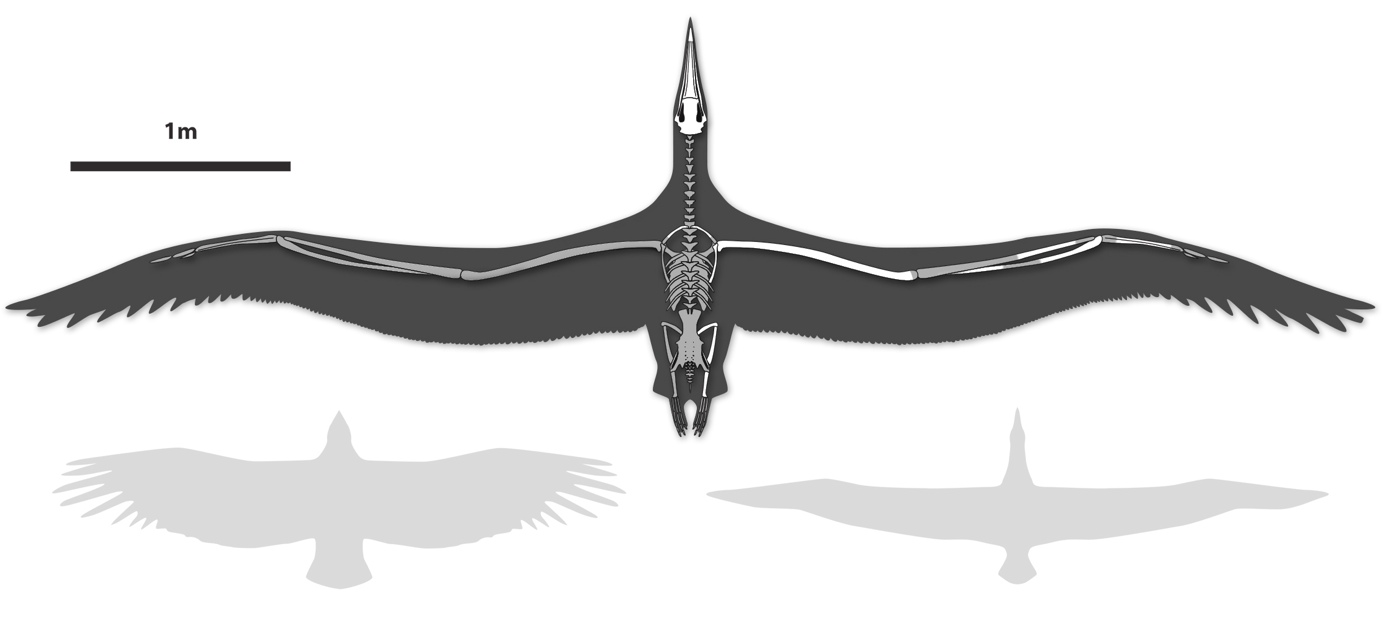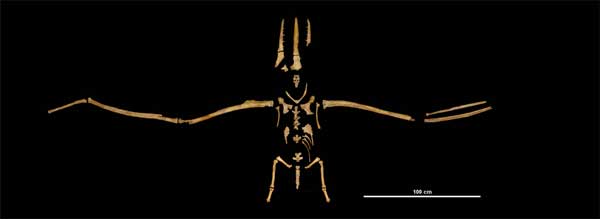Photos of the World's Largest Flying Bird
Largest Flyer?

The remains of a giant seabird that lived between 25 million and 28 million years ago have been discovered near what is now Charleston, South Carolina. Now considered the world's largest flying bird, the beat, dubbed Pelagornis sandersi, had a wingspan of about 20 to 24 feet (6.1 to 7.3 meters), which is at least twice that of the previous record holder &emdash; Argentavis magnificens. Here, an artist's reconstruction of the giant bird. [Read full story]
Lots of bird

When alive, the seabird would've been much bigger than condors and nearly twice as big as today's largest flying bird — the royal albatross with its 11.4-foot (3.5 m) wingspan. (Comparison of the birds' sizes shown.)
Extinct bird fossils

The fossils, which included several wing and leg bones as well as a complete skull, were discovered in 1983 when construction workers began their excavations for a new terminal at the Charleston International Airport. The species was named after the excavation leader, Albert Sanders.
Pelagornis sandersi

The extinct bird is a previously unknown member of a group of extinct seabirds called pelagornithid known for their pseudo-teeth. "These pseudo-teeth were not made with enamel like true teeth are, but were projections of bone from the jaw," said study researcher Daniel Ksepka, a paleontologist and curator of science at the Bruce Museum in Greenwich, Connecticut. "They are very conical and pointed, which suggests they were used for piercing prey. The most likely source of food for these birds were fish and squid near the surface of the water."
Here, Ksepka examines the bird's fossilized skull, revealing its unique beak. [Read full story]
Mystery Solved: How Airplane-Sized Bird Flew

Illustration of the world's largest known flying bird (Argentavis magnificens) with a wingspan of about 23 feet, soaring over the plains of Argentina 6 million years ago.
Ancient Toothy Bird Had Record Wingspan

The comparable bones of Pelagornis sandersi also would have been 15 percent larger than those of another pelagornithid, this one dubbed Pelagornis chilensis, discovered in northern Chile, Ksepka told Live Science. P. chilensis lived some 5 million to 10 million years ago. [Read full story about the P. chilensis finding]
Get the world’s most fascinating discoveries delivered straight to your inbox.
 Live Science Plus
Live Science Plus






